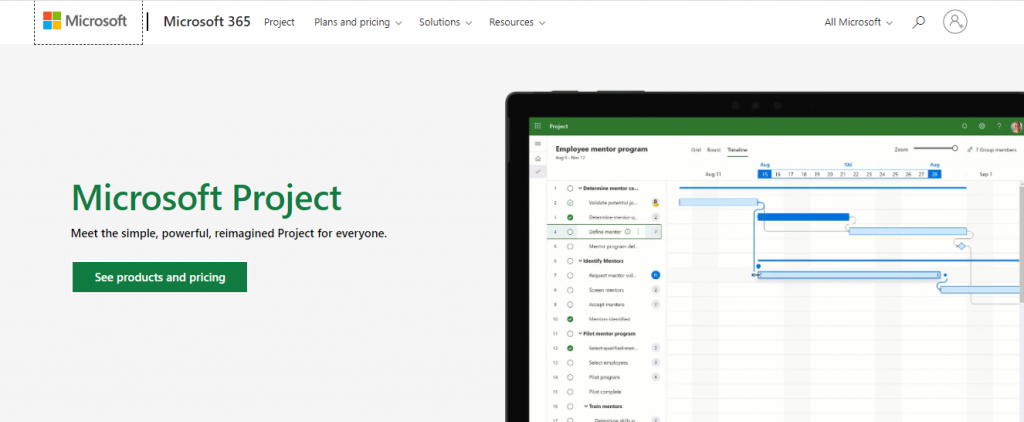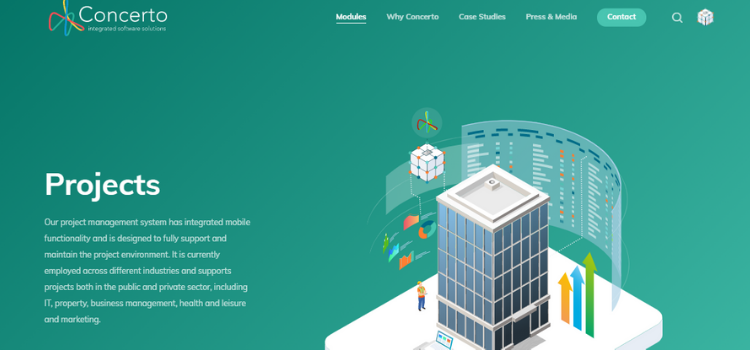Table of content
So when you look to transform your brilliant business idea into something tangible, questions like “How much does it cost to develop software?” or “How to estimate project cost?” will inevitably pop up. Most of the time, the factors that influence the cost of software development don’t lie on the surface, thus hiding from the unaware eyes.
As a result, customers have no idea what constitutes their solution and how tricky the estimation process is.
This article will zoom into development costs and clarify cost estimation models in software development. By the end of this article, you will be able to run the numbers while developing a project budget and have the cost estimation tools in your arsenal to calculate project costs.
What Is Cost Estimation in Software Project Management?
Within the project management frames, cost estimation refers to calculating the overall costs linked to completing a project within the scope and as specified by its time frame. An inclusive software cost estimation typically entails both the direct and indirect costs connected with making a project come to completion. This will likely include overhead costs, labor costs, vendor fees, etc.
3 Key Cost Estimation Models in Software Development
Software cost estimating simply means a technique applied to figure out the cost evaluation. The cost estimate is the software service provider’s approximation of what the software development and testing are likely to cost. Cost software development estimation models, in their turn, are some mathematical valuations or measure calculations that are used to find out software development costs.
The most popular software cost estimation models include:
Empirical Estimation Technique
Simply put, this technique is based on the data taken from the previous projects and some information based on educated guesswork and assumptions. The evidence-based formulas are applied to making a prediction that is a crucial component of the software project planning step.
This technique also requires prior experience in developing a similar solution. Whereas empirical estimation techniques lean heavily on acumen, various activities linked to estimation have been validated over the years. The most popular techniques in this field are the Expert judgment technique and Delphi cost estimation.
Heuristic Technique
A heuristic technique refers to any way of addressing the issue that utilizes a viable method or different alternative ways to deliver arrangements that may not be ideal, however are adequate given a restricted time span or cutoff time.
Heuristics techniques are expected to be adaptable and are used for quick decisions, particularly when finding an ideal arrangement is either impossible or when working with complex information. This technique expresses the relationship among different project parameters through mathematical equations.
The popular heuristic technique is given by the Constructive Cost Model (COCOMO). The model uses a regression formula with parameters determined on the basis of industry data and characteristics of a particular project.
Analytical Estimation Technique
Analytical estimation is a work measuring technique. First, a task is divided into simple component operations or elements. If standard times can be transferred from another source, these are applied to elements. Where such times are inaccessible, they are evaluated according to the experience of the work.
The estimation is performed by a proficient and well-versed specialist who has had hands-on experience in the estimating process. He or she then simply calculates the total of working hours that a fully competent worker will need, delivering at a specified level of performance.
Understanding the Types of Estimates
To address the perpetual cost issues, you also need to understand three main kinds of estimates with varying degrees of accuracy. So, what are the three types of cost estimates? They include:
Ballpark aka rough estimate
This estimate type will provide you with a thumbnail sketch of the potential cost range that you might expect for your project. The main aim of the ballpark estimate is to answer the question of whether or not you and your vendor can even pursue product development.
Budget estimate
Budget estimates are forecasts that are made to plan strategy and budgets. Usually, a client articulates a given budget to see what the vendor could deliver for the set amount. Estimates are required to prioritize strategy based on various factors, including risk.
SoW (Statement of Work)
This estimate type defines project-specific activities, deliverables, and timelines for the project. Therefore, a client is up front about his or her needs and strategy and requests a vendor to provide an accurate estimate.
Now that we’ve studied the basics, let’s move onto software cost estimation methods that are typically used to mull over your development budget.
Estimating Techniques
You may put several cost estimating techniques at different stages in a project’s development, and the main point is to revisit your assessments and reconsider them as the project goes forward. There are four major approaches to find out the project worthiness – here’s how they’re best deployed.
Top-down
Top-down estimating is carried out by senior management based on the general information available about the project and data derived from previous, similar projects. This technique starts with outlining the project goal or final deliverable and breaking it down into smaller planning parts. Each of these smaller parts is then polished into greater detail, and assigned to team members.
You should apply the top-down technique only when there’s a clear vision of the project details, and the leading PM has a full picture of how the organization will benefit from the project. This method is also used when you need a quick rough approximation of your budget.
Bottom-up
The bottom-up method is more detailed and time-consuming than the first one since it analyzes every detail of the project. Within the bottom-up approach to estimating, the project team focuses on each of the client’s requirements, defining the lowest level appropriate to make a range of estimates.
Typically, the individual project team members who will take over the tasks analyze the costs, because they are in a better position to estimate a task that they have experience in.
Compared with the top-down techniques, the bottom-up estimates feel more tangible and accurate.
Analogous estimation
The technique is based on historical data by comparing the current project with a similar project that took place in the past. It does not require data manipulation or statistical adjustments. Analogous estimation is thus a type of expert judgment with a sprinkle of historical data since no calculations are taking place.
To apply this method, you’ll need data from previous and on-going projects (costs and work hours), a similar project, and the participation of the project manager and estimation team.
Planning Poker
This one is a consensus-based estimating and planning technique used within the Agile methodology. As an introduction to a poker planning session, the product owner or customer demonstrates an agile user story or explains a feature to the estimators.
Each team member holds a deck of Planning Poker cards. Each card contains a value like 0, 1, 2, 3, 5, 8, 13, 20, 40 and 100. If the value selected by each estimator is the same then this value becomes the estimate.
Example of Software Development Cost Estimation
We at Devox Software most often receive inquiries to create design and development solutions. Every single case is unique with a whole range of factors impacting the average cost of software development. Usually, we follow the procedure stated below:
Step 1. When a client reaches out to us to get a software development quotation, we collect the data necessary for further analysis. After that, the assigned specialists liaise with the client to identify the project requirements and find out whether the design is already provided.
Step 2. If the product design needs to be developed, we settle the design requirements prior to the cost estimation. At this point, our Account Manager, Design Team Lead, and the assigned designer usually set up a call with a client to get a clear idea of his or her expectations.
After that, our dedicated development team compiles a brief that is later used for the cost estimate which should be approved by the client. Once all technicalities are attended to, the team goes on with designing the solution and making changes if necessary. At the end of this stage, the client gets a complete product design for approval.
Step 3. When the design is all set, our team proceeds with software cost estimation. There are two types of cost estimates – the one performed by full-stack developers and the two separate estimations made by both front-end developers and back-end developers. When the software cost estimation template is ready, we check it in with the client and move on to the development.
QA and PM risk analysis can also be performed based on the software costing estimation. The analysis uses a percentage of the overall development working hours. For example, QA risks account for 30% of total development time, whereas PM risks and risk buffer equal 15-25% and 10%+ respectively. Risk categories vary and may include risks connected with staff like sick leaves, bug risks, and any other perils that don’t fit in the general cost estimation.
Typical Mistakes in Developing a Project Budget and Solutions
The purpose of planning a development budget is to make certain that you’re prepared for all possible circumstances. Going over the budget is not an option, along with delivering an incomplete project.
If you end up with an overspent, then chances are, expenditures started slipping long before you found out. In almost all cases, you can avoid budget overrun especially if you are well aware of common mistakes.
Top Mistakes Clients Make
Allowing false expectations to form
Sometimes vendors forget that clients can’t be expected to know all the peculiarities of the development process. Therefore, developers share their cost estimates which may be wrongly perceived as set in stone.
The vendor has to explain that the budget may need adjustments as the project progresses and requirements change. If the stakeholders are well-informed about the development process, they may be more willing to provide additional money if required.
Overlooking taxes
Aside from the cost of software development, a client may also have to pay taxes. Some companies get tax benefits, while others don’t, so this factor is easy to overlook. It may not have a crucial influence on budgeting decisions, but it can cause problems and eat away at the vendor’s profits.
Hence, while estimating the software development budget, a vendor should research any additional expenditures for the client, including taxes.
Forgetting about maintenance costs
The partners may get carried away by discussing the cost of adding various software features. However, no solution will operate well for long without subsequent maintenance. Moreover, with time, the software will have to be updated to remain functional and effective.
Therefore, vendors should include maintenance in the project scope and consider its cost during budgeting. That includes taking care of the infrastructure and server framework, regular updates, quality assurance automation, etc.
Out of scope task
Some scope changes are part of the plan. But if a client has an incomplete picture of the functionality before the project begins, that’s asking for extra costs. In this case, a vendor complements the estimation and proceeds with new feature implementation.
Erroneous or loose requirements
Cost estimation is difficult per se, let alone requirement variations. When your requirements are vague then the best conceivable estimates would also be very ill-defined. The pill depends on the methodology.
If you work with a Waterfall model, the developers will have to build the whole project from scratch if the requirements change. If the team implements the Agile methodology that is known for its flexibility, the developers can adapt to changes.
Top Mistakes Vendors Make
Inaccurate cost estimate
Wrong cost evaluation within one project area presupposes an inaccurate distribution of resources within the project. As a result, the team ends up with an under-allocation of resources, thus spending more time on critical tasks. In this case, the vendor completes the essential tasks at its own expense.
Not factoring in risks
When a vendor fails to perform an in-depth assessment of risks, cost variations are frequent flyers. And in most cases, without clear risk awareness teams cannot identify the necessary contingencies and end up with cost overruns. The only solution deemed viable here is to prioritize critical tasks.
Underqualified team
If the software development cost estimation was performed by specialists who lack the actual development experience, no wonder the team brings their eggs to the wrong market. Another mistake in this category includes assigning a motley crew of junior and senior devs to draw an estimate. It goes without saying that they need different time to complete the same task, so the average number of manhours will be estimated in the wrong way.
Also, average software developer hourly rate varies according to the seniority level, which may influence the final cost estimation too.
Allowing false expectations to form
Sometimes vendors forget that clients can’t be expected to know all the peculiarities of the development process. Therefore, developers share their cost estimates which may be wrongly perceived as set in stone.
The vendor has to explain that the budget may need adjustments as the project progresses and requirements change. If the stakeholders are well-informed about the development process, they may be more willing to provide additional money if required.
Overlooking taxes
Aside from the cost of software development, a client may also have to pay taxes. Some companies get tax benefits, while others don’t, so this factor is easy to overlook. It may not have a crucial influence on budgeting decisions, but it can cause problems and eat away at the vendor’s profits.
Hence, while estimating the software development budget, a vendor should research any additional expenditures for the client, including taxes.
Forgetting about maintenance costs
The partners may get carried away by discussing the cost of adding various software features. However, no solution will operate well for long without subsequent maintenance. Moreover, with time, the software will have to be updated to remain functional and effective.
Therefore, vendors should include maintenance in the project scope and consider its cost during budgeting. That includes taking care of the infrastructure and server framework, regular updates, quality assurance automation, etc.
5 Top Cost Estimation Tools
As you might have guessed, software cost estimating is the piece de resistance of the whole development process. Luckily, teams won’t have to do back-of-the-napkin math to calculate how much you are going to spend. Software cost estimation tools combine estimating applications, statistical tools, and many more to guarantee you get a clear cut software cost estimation. The most popular cost estimation tools include:
Microsoft Project
A project management tool and a way to optimize portfolio management, which allows you to plan and control the project activities. The software uses built-in templates, tools for different levels of analytics and statistics, time management tools, etc. to tackle anything from small projects to large initiatives.
Concerto
A project management system designed to fully support and maintain the project environment. Its budget and funding management system allows you to enter an overall budget with detailed financial information available that can later be studied, reviewed, and reported on multiple channels.
JIRA
A PM tool for agile teams. It improves team productivity by relying on real-time visual data available to team members and allows them to efficiently track costs for different resources.
Serena Team Track – process management application that organizes business processes and document flow in the process of software development and testing. TeamTrack provides the easiest way to automate internal processes, support, and report on operational metrics and goals.
Primavera Project Planner
A project management software that is used to manage and control projects, track resources, materials, and equipment used in a project. The software includes core project management concepts from work decomposition structure and activities to budget and costs to effectively manage and control project implementation processes.
Spider Project
A professional toolkit that helps navigate project management processes of any complexity within the allocated budget and chosen strategy. The solution allows managers to select projects with maximum impact, optimize resource allocation, minimize costs, and so on.
Now it is time to address the fundamental question, which is why we need to conduct a project cost estimation in the first place.
Why Do We Need to Estimate Software Cost?
Producing detailed estimates is one of the key aspects of project management and a secret sauce of all successfully executed projects. Estimates are essential for outlining the project budget, job schedule, and resource management. If the vendor fails to deliver real development costs, he’ll inevitably face the pains associated with cost overruns, overworked developers, and missed deadlines.
Among other things, on-point cost estimates entail the following benefits:
- Sound planning
- Improved resource management
- Stronger client relationships
- Better reputation and repeat business
How Much Does It Cost to Develop Software in Devox Software?
One of the hardest things to do in software development is to provide a project forecast. Some costs may appear over the life cycle of a project, and a precise estimation method is what draws a line between a successful plan and a failed one. Here, at Devox Software, we are always upfront about development costs, offering an honest algorithm for calculating the costs of developing software.
At Devox Software, honesty and transparency are placed at the heart of all work processes. Open and honest communication ensures an open forum where both clients and teams are granted complete access to the status of all phases of a project. Only in this case, clients are well aware of the rationality and transparency of the project and stay on top of all the price specifications and terms.





















